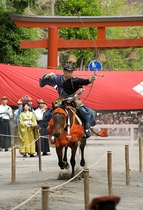
Kobudō
is a collective term for Japanese traditional techniques for the use of armour, blades, firearms, and techniques related to combat and horse riding. The kanji 古流武術 (old-school martial arts) and 古武術 (old martial arts) are other ways of writing it. The general umbrella term is also used to describe these ancient arts.
See all
0
0

Karate
(Okinawan pronunciation: ) is a martial art developed in the Ryukyu Kingdom. It developed from the indigenous Ryukyuan martial arts (called "hand"; tii in Okinawan) under the influence of Kung Fu, particularly Fujian White Crane. Karate is now predominantly a striking art using punching, kicking, knee strikes, elbow strikes and open-hand techniques such as knife-hands, spear-hands and palm-heel strikes. Historically, and in some modern styles, grappling, throws, joint locks, restraints and vital-point strikes are also taught. A karate practitioner is called a . The Empire of Japan annexed the Ryukyu Kingdom in 1879. Karate came to the Japanese archipelago in the early 20th century during a time of migration as Ryukyuans, especially from Okinawa, looked for work in Japan. It was systematically taught in Japan after the Taishō era of 1912-1926. In 1922 the Japanese Ministry of Education invited Gichin Funakoshi to Tokyo to give a karate demonstration. In 1924 Keio University established the first university karate club in mainland Japan, and by 1932 major Japanese universities had karate clubs. In this era of escalating Japanese militarism, the name was changed from ("Chinese hand" or "Tang hand") to ("empty hand") – both of which are pronounced karate in Japanese – to indicate that the Japanese wished to develop the combat form in Japanese style. After World War II, Okinawa became (1945) an important United States military site and karate became popular among servicemen stationed there. The martial-arts movies of the 1960s and 1970s served to greatly increase the popularity of martial arts around the world, and English-speakers began to use the word karate in a generic way to refer to all striking-based Asian martial arts. Karate schools began appearing across the world, catering to those with casual interest as well as those seeking a deeper study of the art. Shigeru Egami, Chief Instructor of Shotokan Dojo, opined that "the majority of followers of karate in overseas countries pursue karate only for its fighting techniques ... Movies and television ... depict karate as a mysterious way of fighting capable of causing death or injury with a single blow ... the mass media present a pseudo art far from the real thing." Shōshin Nagamine said: "Karate may be considered as the conflict within oneself or as a life-long marathon which can be won only through self-discipline, hard training and one's own creative efforts." On 28 September 2015 karate featured on a shortlist (along with baseball, softball, skateboarding, surfing, and sport climbing) for consideration for inclusion in the 2020 Summer Olympics. On 1 June 2016 the International Olympic Committee's executive board announced they were supporting the inclusion of all five sports (counting baseball and softball as only one sport) for inclusion in the 2020 Games. Web Japan (sponsored by the Japanese Ministry of Foreign Affairs) claims that karate has 50 million practitioners worldwide, while the World Karate Federation claims there are 100 million practitioners around the world.
See all
0
0
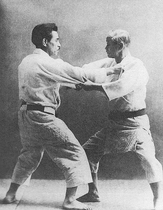
Judo
is generally categorized as a modern martial art, which has since evolved into a combat and Olympic sport. The sport was originally created in 1882 by Jigoro Kano (嘉納治五郎) as a physical, mental, and moral pedagogy in Japan. Judo's most prominent feature is its competitive element, where the objective is to either throw or take down an opponent to the ground, immobilize or otherwise subdue an opponent with a pin, or force an opponent to submit with a joint lock or a choke. Strikes and thrusts by hands and feet as well as weapons defences are a part of judo, but only in pre-arranged forms (kata, 形) and are not allowed in judo competition or free practice (randori, 乱取り). A judo practitioner is called a judoka. The philosophy and subsequent pedagogy developed for judo became the model for other modern Japanese martial arts that developed from . Judo also spawned a number of derivative martial arts across the world, such as Brazilian jiu-jitsu, Krav Maga and Sambo.
See all
0
0
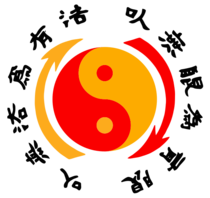
Jeet Kune Do
Jeet Kune Do , or "The way of the intercepting fist" in Cantonese, abbreviated JKD, is a hybrid philosophy of martial arts heavily influenced by the personal philosophy and experiences of martial artist Bruce Lee. Lee founded the system on July 9, 1967, referring to it as "non-classical", suggesting that it is a formless form of Chinese Kung Fu. Unlike more traditional martial arts, Jeet Kune Do is not fixed or patterned and is a philosophy with guiding ideas. Named for the Wing Chun concept of interception or attacking when one's opponent is about to attack, Jeet Kune Do's practitioners believe in minimal effort with maximum effect and extreme speed. On January 10, 1996, the Bruce Lee Foundation decided to use the name Jun Fan Jeet Kune Do (振藩截拳道) to refer to the martial arts system which Lee founded; "Jun Fan" being Lee's Chinese given name. It is referenced in the screenplay of the 1973 Warner Brothers film Enter the Dragon, when Lee is asked, "What's your style?", he replies, "My style?...You can call it the art of fighting without fighting."
See all
0
0

Iaido
abbreviated is a Japanese martial art that emphasizes being aware and capable of quickly drawing the sword and responding to sudden attacks. Iaido consists of four main components: the smooth, controlled movements of drawing the sword from its scabbard (or saya), striking or cutting an opponent, shaking blood from the blade, and replacing the sword in the scabbard. While beginning practitioners of iaido may start learning with a wooden sword (bokken) depending on the teaching style of a particular instructor, most of the practitioners use a blunt-edged sword called an iaitō or mogitō. Few, more experienced, iaido practitioners use a sharp-edged sword (shinken). Practitioners of iaido are called iaidoka.
See all
0
0
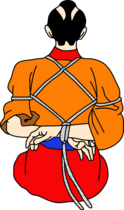
Hojōjutsu
or or just is the traditional Japanese martial art of restraining a person using cord or rope (called in Japanese), as a precursor to modern-day handcuffs. Encompassing many different materials, techniques and methods from many different schools, Hojōjutsu is a quintessentially Japanese art that is a unique product of Japanese history and culture. As a martial arts practice, Hojōjutsu is seldom if ever taught on its own but as part of a curriculum under the aegis of the body of study encompassed by a larger school of bugei or budō, often as an advanced study in jujutsu. Regardless of the source, Hojōjutsu techniques and methods are seldom demonstrated outside Japan.
See all
0
0
Gatka
Gatka (ਗੱਤਕਾ; गतका; ) is a form of martial art associated primarily with the Sikhs of the Punjab and other related ethnic groups, such as Hindkowans. It is a style of stick-fighting, with wooden sticks intended to simulate swords. The Punjabi name, gatka, refers to the wooden stick used and this term might have originated as a diminutive of a Sanskrit word, gada, meaning "mace". The stick used in Gatka is made of wood and is usually long, with a thickness of around . It comes with a fitted leather hilt, and is often decorated with Punjabi-style multi-coloured threads.
See all
0
0
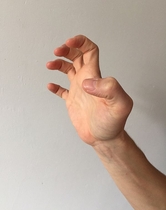
Fu Jow Pai
Fu Jow Pai (Cantonese Jyutping: Fu2 Zaau2 Pai3, Mandarin literally "Tiger Claw School", also "Tiger Claw System" or "Tiger Claw Style"), originally named "Hark Fu Moon" (Cantonese Jyutping: Hak1 Fu2 Mun4, Mandarin literally "Black Tiger School", also "Black Tiger System") is a Chinese martial art that has its origins in Hoy Hong Temple out of Tiger techniques of Five Animal Kung Fu, Ng Ying Kungfu (Chinese: 五形功夫). The system "was modeled after the demeanor and fighting strategy of an attacking tiger. Techniques unique to Fu-Jow Pai are ripping, tearing, clawing and grasping applications."
See all
0
0
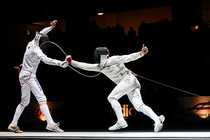
Fencing
Fencing is a group of three related combat sports. The three disciplines in modern fencing are the foil, the épée, and the sabre (also saber); winning points are made through the weapon's contact with an opponent. A fourth discipline, singlestick, appeared in the 1904 Olympics but was dropped after that, and is not a part of modern fencing. Fencing was one of the first sports to be played in the Olympics. Based on the traditional skills of swordsmanship, the modern sport arose at the end of the 19th century, with the Italian school having modified the historical European martial art of classical fencing, and the French school later refining the Italian system. There are three forms of modern fencing, each of which uses a different kind of weapon and has different rules; thus the sport itself is divided into three competitive scenes: foil, épée, and sabre. Most competitive fencers choose to specialize in one weapon only. Competitive fencing is one of the five activities which have been featured in every modern Olympic Games, the other four being athletics, cycling, swimming, and gymnastics.
See all
0
0
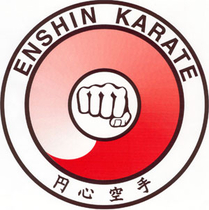
Enshin kaikan
is a style of "full contact karate", or Knockdown karate, founded in 1988 with dojo and students in various countries around the world.
0
0
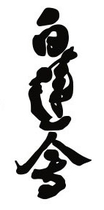
Byakuren Kaikan
The Byakuren Kaikan (Japanese: 白蓮会館 - literally translated: "White Lotus Association") or Byakuren Karate is a full contact karate style founded in 1984 by Sugihara Masayasu (Japanese: 杉原 正康). The Byakuren Kaikan is a member of the Japan Fullcontact Karate Organization (JFKO) The Byakuren Kaikan is registered in Japan as a nonprofit organization (NPO).
See all
0
0

Bōjutsu
translated from Japanese as "staff technique", is the martial art of stick fighting using a bō, which is the Japanese word for staff. Staffs have been in use for thousands of years in Asian martial arts like Silambam. Some techniques involve slashing, swinging, and stabbing with the staff. Others involve using the staff as a vaulting pole or as a prop for hand-to-hand strikes. Today bōjutsu is usually associated either with Okinawan kobudō or with Japanese koryū budō. Japanese bōjutsu is one of the core elements of classical martial training. Thrusting, swinging, and striking techniques often resemble empty-hand movements, following the philosophy that the bō is merely an "extension of one’s limbs". Consequently, bōjutsu is often incorporated into other styles of empty-hand fighting, like traditional Jū-jutsu, and karate. In the Okinawan context, the weapon is frequently referred to as the kon (棍).
See all
0
0
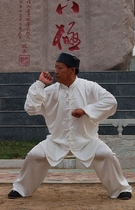
Bajiquan
Bajiquan is a Chinese martial art that features explosive, short-range power and is famous for its elbow and shoulder strikes. Its full name is kaimen ba ji quan . Bajiquan is now popular in northern China and Taiwan. Later, it was introduced to Japan, South Korea and other countries, such as the United States, Canada, Britain, France, Italy among others.
See all
0
0
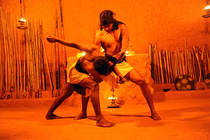
Angampora
Angampora is a Sinhalese martial art that combines combat techniques, self-defense, sport, exercise, and meditation. A key component of angampora is the namesake angam, which incorporates hand-to-hand fighting, and illangam, involving the use of indigenous weapons such as the ethunu kaduwa, staves, knives and swords. Angampora's distinct feature lies in the use of pressure point attacks to inflict pain or permanently paralyze the opponent. Fighters usually make use of both striking and grappling techniques, and fight until the opponent is caught in a submission lock that they cannot escape. Usage of weapons is discretionary. Perimeters of fighting are defined in advance, and in some of the cases is a pit. With the advent of colonial rule over the entirety of the island in 1815, Angampora fell into disuse and was very nearly lost as a part of the country's heritage. The British colonial administration prohibited its practice due to the dangers posed by a civilian populace versed in a martial art, burning down any angan madu (practice huts devoted to the martial art) found: flouting of the law was punished by a gunshot to the knee, effectively crippling practitioners; Angampora nevertheless survived within a few families, allowing it to emerge into mainstream Sri Lankan culture post-independence. A number of paintings related to angampora are found at Buddhist temples in Sri Lanka. These include Embekka Devalaya, Gadaladeniya Rajamaha Viharaya, Temple of the Tooth, Saman Devalaya (Ratnapura) and Lankathilaka Rajamaha Viharaya.
See all
0
0

Daitō-ryū Aiki-jūjutsu
originally called is a Japanese martial art that first became widely known in the early 20th century under the headmastership of Takeda Sōkaku. Takeda had extensive training in several martial arts (including Kashima Shinden Jikishinkage-ryū and Sumo) and referred to the style he taught as "Daitō-ryū" (literally, "Great Eastern School"). Although the school's traditions claim to extend back centuries in Japanese history there are no known extant records regarding the ryū before Takeda. Whether Takeda is regarded as either the restorer or the founder of the art, the known history of Daitō-ryū begins with him. Takeda's best-known student was Morihei Ueshiba, the founder of Aikido.
See all
0
0
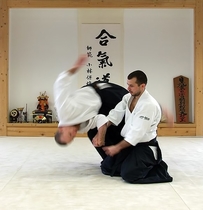
Aikido
is a modern Japanese martial art developed by Morihei Ueshiba as a synthesis of his martial studies, philosophy and religious beliefs. Ueshiba's goal was to create an art that practitioners could use to defend themselves while also protecting their attackers from injury. Aikido is often translated as "the way of unifying (with) life energy" or as "the way of harmonious spirit". Aikido's techniques include: irimi (entering), and tenkan (turning) movements (that redirect the opponent's attack momentum), and various types of throws and joint locks. Aikido derives mainly from the martial art of Daitō-ryū Aiki-jūjutsu, but began to diverge from it in the late 1920s, partly due to Ueshiba's involvement with the Ōmoto-kyō religion. Ueshiba's early students' documents bear the term aiki-jūjutsu. Ueshiba's senior students have different approaches to aikido, depending partly on when they studied with him. Today, aikido is found all over the world in a number of styles, with broad ranges of interpretation and emphasis. However, they all share techniques formulated by Ueshiba and most have concern for the well-being of the attacker.
See all
0
0
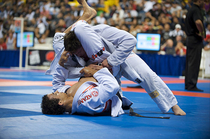
Brazilian jiu-jitsu
Brazilian jiu-jitsu (BJJ; jiu-jitsu brasileiro) is a self-defense system, martial art and combat sport system that focuses on grappling with particular emphasis on ground fighting. Brazilian jiu-jitsu was developed from Kodokan judo ground fighting (newaza) fundamentals that were taught by a number of Japanese individuals including Takeo Yano, Mitsuyo Maeda, Soshihiro Satake, and Isao Okano. Brazilian jiu-jitsu eventually came to be its own defined combat sport through the innovations, practices, and adaptation of judo. BJJ teaches that a smaller, weaker person can successfully defend themself against a bigger, stronger, heavier opponent by using leverage to take the fight to the ground, and then applying joint locks and chokeholds to defeat the opponent. BJJ training can be used for sport grappling tournaments and in self-defense situations.
See all
0
0
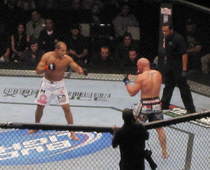
Mixed martial arts
Mixed martial arts (MMA) sometimes referred to as cage fighting, is a full-contact combat sport based on striking, grappling and ground fighting, made up from various combat sports and martial arts from around the world. The first documented use of the term mixed martial arts was in a review of UFC 1 by television critic Howard Rosenberg in 1993. The question of who actually coined the term is subject to debate. An early high-profile mixed martial arts bout was fought in 1951, between the judoka Masahiko Kimura and Brazilian jiu-jitsu founder Hélio Gracie in Brazil. In the West, the concept of combining elements of multiple martial arts was popularized by Bruce Lee's Jeet Kune Do during the late 1960s to early 1970s. A precursor to modern MMA was the 1976 Muhammad Ali vs. Antonio Inoki bout, fought between boxer Muhammad Ali and wrestler Antonio Inoki in Japan, where it later inspired the foundation of Pancrase in 1993 and Pride Fighting Championships in 1997. In 1980, CV Productions, Inc. created the first regulated MMA league in the United States, called Tough Guy Contest, which was later renamed Battle of the Superfighters. The company sanctioned ten tournaments in Pennsylvania. However, in 1983 the Pennsylvania State Senate passed a bill prohibiting the sport. Originally promoted as a competition to find the most effective martial arts for real unarmed combat, competitors from different fighting styles were pitted against one another in contests with relatively few rules. Later, individual fighters incorporated multiple martial arts into their style. MMA promoters were pressured to adopt additional rules to increase competitors' safety, to comply with sport regulations and to broaden mainstream acceptance of the sport. Following these changes, the sport has seen increased popularity with a pay-per-view business that rivals boxing and professional wrestling.
See all
0
0

Kickboxing
Kickboxing is a group of stand-up combat sports based on kicking and punching, historically developed from karate mixed with boxing. Kickboxing is practiced for self-defence, general fitness, or as a contact sport. Japanese kickboxing originated in the late 1950s, with competitions held since then. American kickboxing originated in the 1970s and was brought to prominence in September 1974, when the Professional Karate Association (PKA) held the first World Championships. Historically, kickboxing can be considered a hybrid martial art formed from the combination of elements of various traditional styles. This approach became increasingly popular since the 1970s, and since the 1990s, kickboxing has contributed to the emergence of mixed martial arts via further hybridization with ground fighting techniques from Brazilian jiu-jitsu and folk wrestling. There is no single international governing body. International governing bodies include the World Association of Kickboxing Organizations, World Kickboxing Association, International Sport Karate Association, International Kickboxing Federation, and World Kickboxing Network, among others. Consequently, there is no single kickboxing world championship, and champion titles are issued by individual promotions, such as Glory, SUPERKOMBAT, ONE FC, K-1 and Kunlun Fight among others. Bouts organized under different governing bodies apply different rules, such as allowing the use of knees or clinching, etc.
See all
0
0
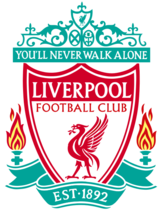
Liverpool F.C.
Liverpool Football Club is a professional football club in Liverpool, England, that competes in the Premier League, the top tier of English football. The club has won six European Cups, more than any other English club, three UEFA Cups, four UEFA Super Cups (both also English records), one FIFA Club World Cup, eighteen League titles, seven FA Cups, a record eight League Cups, fifteen FA Community Shields and one Football League Super Cup. Founded in 1892, the club joined the Football League the following year and has played at Anfield since its formation. Liverpool established itself as a major force in English and European football in the 1970s and 1980s when Bill Shankly, Bob Paisley, Joe Fagan and Kenny Dalglish led the club to a combined eleven League titles and four European Cups. Under the management of Rafael Benítez and captained by homegrown player Steven Gerrard, Liverpool became European champions for the fifth time in 2005, before a sixth title was added under Jürgen Klopp in 2019. Liverpool was the seventh highest-earning football club in the world in 2019, with an annual revenue of €513.7 million, and the world's eighth most valuable football club in 2019, valued at $2.183 billion. The club is one of the most widely supported teams in the world. Liverpool has long-standing rivalries with Manchester United and Everton. The club's supporters have been involved in two major tragedies: the Heysel Stadium disaster, where escaping fans were pressed against a collapsing wall at the 1985 European Cup Final in Brussels, with 39 people – mostly Italians and Juventus fans – dying, after which English clubs were given a five-year ban from European competition, and the Hillsborough disaster in 1989, where 96 Liverpool supporters died in a crush against perimeter fencing. The team changed from red shirts and white shorts to an all-red home strip in 1964 which has been used ever since. Red has been the main shirt colour ever since 1896. The club's anthem is "You'll Never Walk Alone".
See all
0
0

Sharks (Currie Cup)
The Sharks (known as the Cell C Sharks for sponsorship reasons) are a South Africa rugby union team that participates in the annual Currie Cup tournament. The Sharks are the current representative team of the KwaZulu-Natal Rugby Union and they draw most of their players from the KwaZulu-Natal Province. For most of their history, the team was known simply as 'Natal', with a nickname of 'The Banana Boys' or Piesangboere in Afrikaans, until the mid-1990s when they were re-branded as the Sharks. The team is the third most successful provincial union in the Currie Cup, having won the competition eight times. Natal won its first Currie Cup in 1990, the same year the union celebrated its centenary. Since then the Sharks have won the Currie Cup in 1992, 1995, 1996, 2008, 2010, 2013 and most recently in 2018. The KwaZulu-Natal Rugby Union are the majority owner of the Sharks franchise who compete in the United Rugby Championship. They also play in Durban and represent the province of KwaZulu-Natal. For most of Super Rugby history, the Sharks Super Rugby franchise drew players from a much larger area than the Sharks provincial union, with the rugby unions of Border, based in East London and Eastern Province from Port Elizabeth included in the Sharks franchise. Since 2013 the Southern Kings functions on its own, and no longer supplies players to the Sharks franchise.
See all
0
0
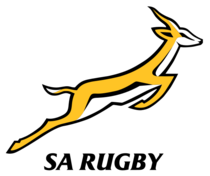
South African Rugby Union
The South African Rugby Union (SARU) is the governing body for rugby union in South Africa and is affiliated to World Rugby. It was established in 1992 as the South African Rugby Football Union, from the merger of the South African Rugby Board and the non-racial South African Rugby Union (SACOS), and took up its current name in 2005. SARU organises several national teams, most notably the senior national side, the Springboks.
See all
0
0

South Africa national rugby league team
The South Africa national rugby league team to date have competed at two Rugby League World Cups in 1995 and 2000. Rugby league was originally introduced to South Africa in the 1950s with the staging of several series tournaments within the country that saw fixtures between the English and the French however this concept failed to generate the needed interest and was not upheld. The South Africans did not see further international rugby league until the 1960s where the first national side undertook fixtures against the visiting British and a tour to Australia. From the 1960s onwards the international fixture list for the South Africans was minimal and it was not until the early 1990s when they began to play with some lasting regularity. Since they began playing international rugby league South Africa have always found it difficult to compete against the more established nations and so progress and improvement have been slow. Possibly their greatest achievement to date has been the qualification and participation in two World Cups in both 1995 and 2000 where South Africa failed to win a fixture after being seeded in tough groups at both tournaments where they had to play world champions Australia along with England, Fiji, France, Papua New Guinea and Tonga. South Africa traditionally play in a predominately green uniform with black shorts, they have commonly been referred to as The Rhinos since the early 1990s. The South African emblem is a red and yellow King Protea plant which is the national flower of South Africa. South African internationals are played at a variety of venues throughout the country with no singular home ground being used. It has often been said that South Africa has great potential for rugby league, but the sport has a relatively low profile in the country with rugby union being the predominant and more established code. This is exacerbated by the fact that very few schools offer rugby league as an extracurricular activity and there are relatively few youth clubs. The popularity of the South Africa national rugby union team and South Africa national rugby sevens team in the country further hinders the development of rugby league as potential players are groomed to play in the national and provincial Rugby union teams and the national Rugby sevens team from a young age.
See all
0
0

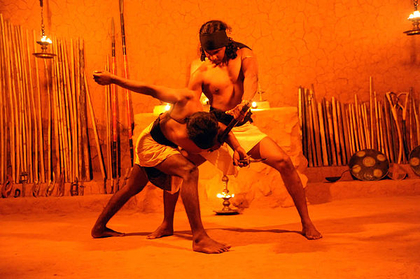





Comments